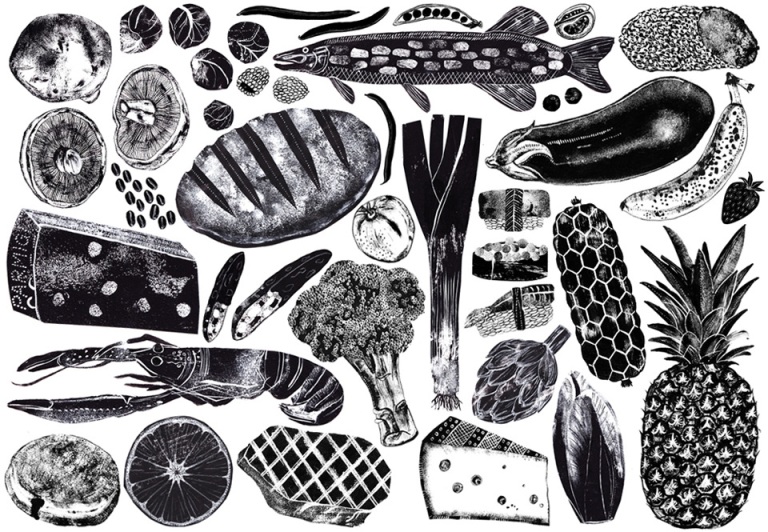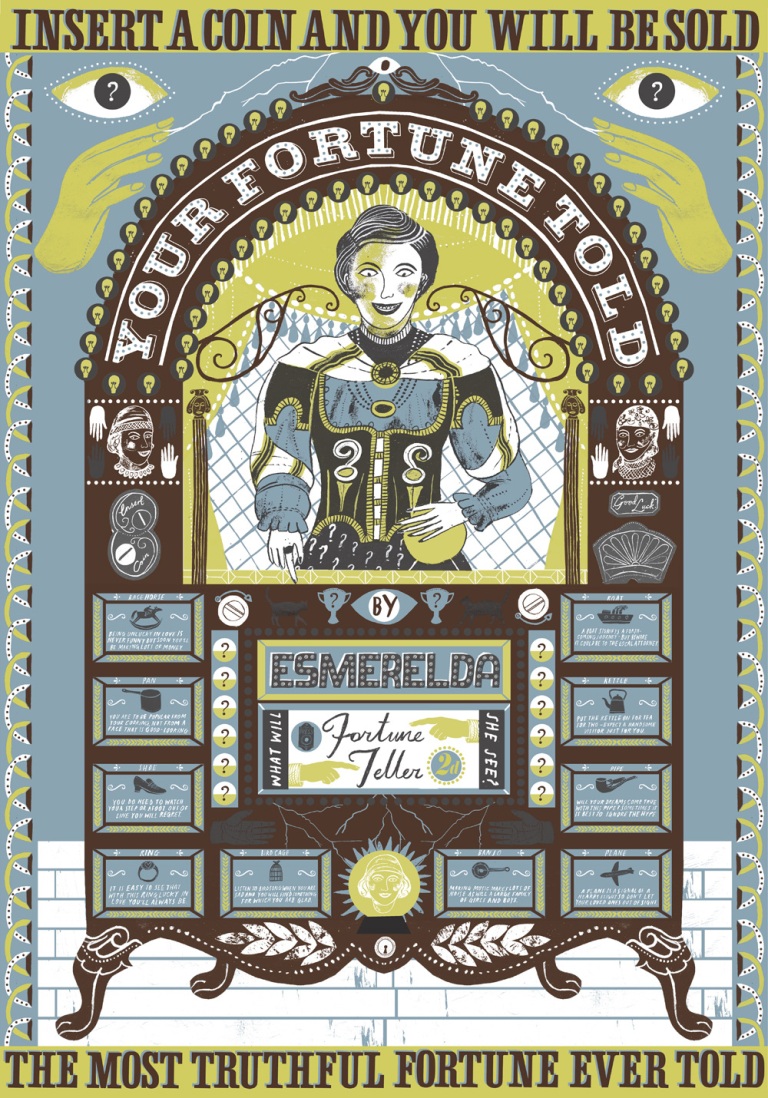Artist Research : Illustration
Vincent Van Gogh
Van Gogh’s art helped him stay emotionally balanced. In 1885, he began work on what is considered to be his first masterpiece, “Potato Eaters.” His brother, Theo, by this time living in Paris, believed the painting would not be well-received in the French capital, where impressionism had become the trend. Nevertheless, van Gogh decided to move to Paris, and showed up at Theo’s house uninvited. In March 1886, Theo welcomed his brother into his small apartment.

In Paris, van Gogh first saw impressionist art, and he was inspired by the colour and light. He began studying with Henri de Toulouse-Lautrec, Pissarro and others. To save money, he and his friends posed for each other instead of hiring models. Van Gogh was passionate, and he argued with other painters about their works, alienating those who became tired of his bickering.


Van Gogh was known for his thick application of paint on canvas, called impasto. An Italian word for “paste” or “mixture”, impasto is used to describe a painting technique where paint (usually oil) is laid on so thickly that the texture of brush strokes or palette knife are clearly visible.
Salvador Dali
In 1922, Dali enrolled at the Academia de San Fernando in Madrid. He stayed at the school’s student residence and soon brought his eccentricity to a new level, growing long hair and sideburns, and dressing in the style of English Aesthetes of the late 19th century. During this time, he was influenced by several different artistic styles, including Metaphysics and Cubism, which earned him attention from his fellow students—though he probably didn’t yet understand the Cubist movement entirely.

While in school, Dali began exploring many forms of art including classical painters like Raphael, Bronzino and Diego Velázquez (from whom he adopted his signature curled moustache). He also dabbled in avant-garde art movements such as Dada, a post-World War I anti-establishment movement. While Dali’s apolitical outlook on life prevented him from becoming a strict follower, the Dada philosophy influenced his work throughout his life.

All of this experimentation led to Dali’s first Surrealistic period in 1929. These oil paintings were small collages of his dream images. His work employed a meticulous classical technique, influenced by Renaissance artists, that contradicted the “unreal dream” space that he created with strange hallucinatory characters. Even before this period, Dali was an avid reader of Sigmund Freud’s psychoanalytic theories. Dali’s major contribution to the Surrealist movement was what he called the “paranoiac-critical method,” a mental exercise of accessing the subconscious to enhance artistic creativity. Dali would use the method to create a reality from his dreams and subconscious thoughts, thus mentally changing reality to what he wanted it to be and not necessarily what it was. For Dali, it became a way of life.

By the mid-1930s, Salvador Dali had become as notorious for his colourful personality as his artwork, and, for some art critics, the former was overshadowing the latter. Often sporting an exaggeratedly long moustache, a cape and a walking stick, Dali’s public appearances exhibited some unusual behaviour. In 1934, art dealer Julian Levy introduced Dali to America in a New York exhibition that caused quite a lot of controversy. At a ball held in his honour, Dali, in characteristic flamboyant style, appeared wearing a glass case across his chest which contained a brassiere.
Artist Research : Zine
Alice Pattullo

Alice Pattullo is an illustrator based in East London. She regularly explores British traditions, folklore and superstitions in her personal work, producing limited edition screen prints for exhibition and sale in various galleries and shops across the UK.

Alongside this Alice works on commissioned illustrations for a variety of clients including Bettys and Taylors of Harrogate, Bon Appetite, Esquire, Cecil Sharp House, Country Living, Crabtree and Evelyn, Ditchling Museum of Art and Craft, Design for Today, Faber, HHMI Bulletin, Little Toller, Nandos, National Trust, Sainsbury’s, The V&A Museum, and The Village Voice.

Barbara Ryan
Barbara is a designer and art director.
Aurora Orchestra
Illustrations, design and art direction for the Aurora Orchestra’s 2015/2016 London Season.
Sharing Book
The sharing book is bound on both sides with perforated pages. It can only be used once torn, encouraging sharing. Short-listed for the 2015 ‘New Year Book’ for the Swiss bookbindery BuBu.
Mixed Media Artists:
Dani Sanchis
Dani Sanchis (Dénia, 1976), creates his independent design, graphic communication and illustration studio in 2002
Mainly specialized in poster design, books, corporate identity, graphic communication, branding, web, illustration and collage. editorial, press and also for trademarks.


He understands the visual language as a essential and inexhaustible mean of communication.
Walk, watch, find, study and decide to do or not do, as a resistance means.
He combines his work as a graphic designer with his work as a plastic artist, which develops essentially
pieces with the technique of collage and assemblage.

He currently resides by the sea.
Julien Pacaud
Julien Pacaud is a French artist and illustrator, living and working in Paris, France.
No Regrets

Artworks of 2013
Before becoming an illustrator, he was, by turns : an astrophysical, an international snooker player, a hypnotist and an Esperanto teacher.
Maison magazine
Article about home decoration TV shows.

Time
He hopes he can someday have enough free time to devote himself to his real passion : time travel.
Design Development
A journey through my mind
I wanted create a zine that people would look at and think that makes sense, but to also to get across a message.l
I thought for my sample zine, I would use stick figures as they are the simplest and quickest way of drawing.
I decided that my stick figure should be implemented into my own mind, I wanted to visualise the idea of having an idea. I chose a light bulb as my symbol that the idea had been created, I used this because the light bulb as a symbol of creation is pretty universal.
The hole in the ground that the stick figure falls down represents the darkness and then at the end of his fall he pulls the switch which generates the idea. this was my first four pages of my zine.
The second half of the zine was based around being kind in times of need. so I did another stick figure story, this one had the stick figure walking, when it starts to rain, the stick figure keeps walking and finds a bench at which point he is soaked and decides to sit down, at the other end of the bench another man sits with an umbrella. the end picture puts both of them in the centre of the bench under the umbrella, this is the visualisation of being kind.
I scanned each page over to my computer to edit and create a final design.
1.
Here I used the blend tool and level changing to exaggerate the idea of the darkness.
These are how I edited and changed the imagery around and experimented with the darkness.
2.
Here, I again edited the levels which increased the contrast between the black and the white and bring out any makings on the scanned in image which i can then clear up using the erasing tool.































